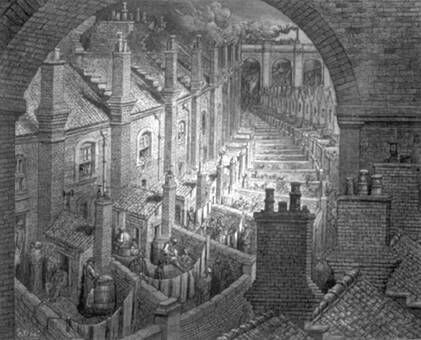The concepts covered in this factsheet go beyond those seen in secondary school. It is intended as a supplement for those who are curious to learn more.
Industrialization in England did not happen overnight. There were several stages in the country's industrialization. What's more, a number of factors explain why industrialisation took place in England in the first place.
The Agricultural Revolution marked the beginning of modern agriculture. Technical innovations made it easier to clear land, drain marshes and stop some land falling fallow every season. These innovations also improved the ability to feed people and livestock. New fertilisers are boosting agricultural production.
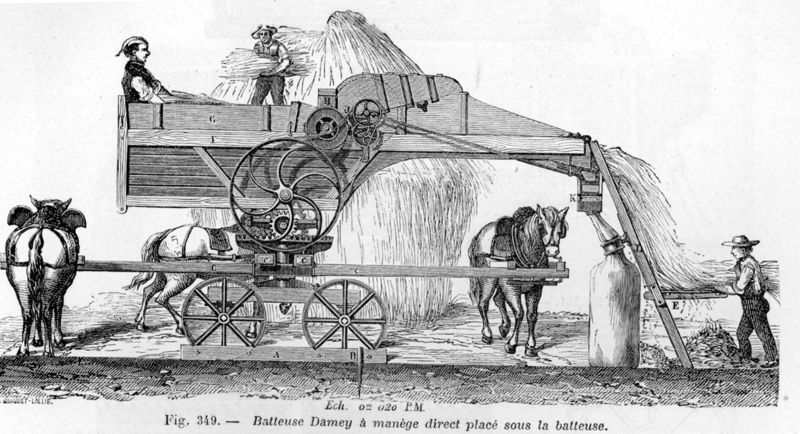
At the same time, agricultural machinery was developing. All the peasant's tasks were now mechanised. This is why we say that the peasant is now a farm worker.
However, these changes in farming practices also had an impact on rural life. Farm workers had to pay for their land. This led to the emergence of large landowners who took advantage of the new means of production and the new higher profitability of land. The land that peasants could not pay for was bought up by these large landowners. The land is more productive and closer together. The same land requires fewer workers while being more productive.
This new reality had major demographic consequences: the lands were more productive and fewer peasants suffered from malnutrition. The population increased in the countryside. However, fewer farm workers were needed, so many of them found themselves out of work. Many of them left for the cities. This was the beginning of the rural exodus.
In the early 18th century, commercial activities were concentrated where there was labour: in rural areas. There was very little demand for textiles and metalwork. In fact, the rural population made everything they needed. These people were not specialised; they made what they needed. At the same time, in the towns, production related to textiles and metalwork was limited. Artisans worked mainly for the nobility.
The period preceding industrialization is known as proto-industrialization. This period, which marked the transition from a society of artisans to an industrial society, took place in several European countries, including England.
During the 18th century, however, the situation changed and demand for textiles and metalwork increased considerably. This increase in demand had three causes: the rise in population due to the agricultural revolution, the fact that the mother countries had to supply the products manufactured for all their colonies, and the professionalisation of the army. Each country was now obliged to clothe and arm its soldiers. The old system of production was no longer suited to the new needs, especially as these goods had to be obtained at lower prices.
This led to the emergence of a new role in society: that of the merchant-manufacturer. Merchants offered a variety of goods. He called on a number of artisans to manufacture the goods as quickly as possible. This system was highly advantageous for merchant-manufacturers, as they did not have to pay for production premises and it was the artisans who had to pay for their tools. These merchants have few expenses to make, while the potential for profits is quite high. These profits will then enable them to invest even more.
However, this system does not only have advantages. The main disadvantages for the merchant-manufacturer are the lack of uniformity between products from one artisan to another, and the lack of quality control. He cannot guarantee his customers that the products will be ready by a certain date, and he cannot guarantee that they will all be the same. The disadvantages are greater for artisans. Although they receive additional income from this new production, this income is not regular, is not guaranteed and is not high. What's more, when the merchant has no contract, the artisan has no salary.
It was to ensure more uniform production that merchant-manufacturers began to use the factory system. By grouping all the artisans together in the same building, merchant-manufacturers could now ensure better control: quality, uniformity and discipline. The strict discipline imposed on the artisans managed the number of hours they had to work and introduced a system of punishments when they were not sufficiently productive. From the point of view of the merchant-manufacturers, this system had nothing but advantages, as it made them more competitive and enabled them to guarantee their customers better delivery times.
However, artisans lost their freedom and were devalued by this mode of production, which no longer recognised the value of their work. What's more, as the factories were built in towns, the artisans were forced to leave the countryside.
The 18th century saw the emergence of a new source of energy: coal. Coal is derived from the decomposition of animals and plants. These residues form a compressed layer between sedimentary rocks. Coal is a fossil fuel. Before using coal, humans used the energy of wood and charcoal, the muscular power of humans and animals and the mechanical power of water.
The arrival of coal as a new source of energy was to revolutionise a number of areas, as the energy produced was more powerful. The method of purifying coal was invented in 1709. It was now possible to obtain pure carbon. This new technique made it possible to create blast furnaces that reached very high temperatures.
These furnaces were used to smelt iron ore. This technology produced a new alloy: cast iron, a mixture of iron and carbon. Coal thus facilitated the development of metallurgy. What's more, it is an abundant resource, easy to extract and easy to transport. The opportunities offered by coal quickly became apparent, which is why there were more and more coal mines. By the 18th century, around 300 tonnes of coal were being mined every year. Nearly 200 years later, 1 million tonnes of coal were mined annually.
The potential energy in coal and the growing needs will force people to create coal-powered machines. From then on, the aim was to have machines do the work and use the power of coal energy for transport. The first technical innovation proved particularly useful in facilitating the extraction of this new raw material. The deeper the coal mines, the more water they contained. So ways had to be found to dry out the mines. Water pumps already existed, but they were not powerful enough. The first steam pump was invented in 1711.
The most significant invention of the Industrial Revolution came in 1762: the steam machine. The very first steam machine had been developed in 1690, but it was not very efficient. In 1762, James Watt modified and improved the steam machine by using a system of pistons and a rotary movement. It was now possible to use the steam machine as a stand-alone engine. The steam machine could also be used to mechanically activate other machines.
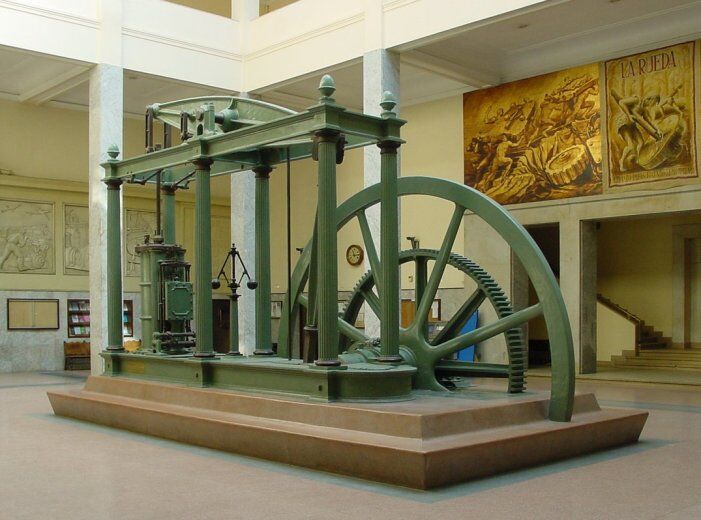

It was the invention of this type of steam machine that encouraged the mechanisation of work and the spread of industry: industrialists travelled the continent to sell and install steam machines. By harnessing the power of steam, it was possible to develop machines that could operate at unprecedented speeds.
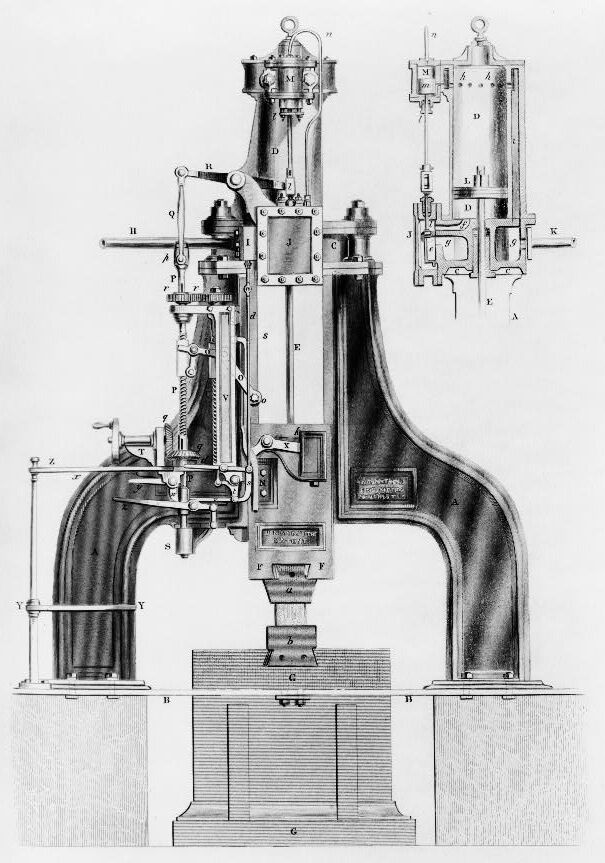
The textile sector was also affected by technical innovations. The first of these was the flying shuttle, invented in 1733. This machine made weaving faster. As weaving became more efficient, yarn consumption increased radically. That's why, in 1779, engineers developed the spinning mule, which made it possible to produce thread in very large quantities. In 1885, the steam-powered weaving machine was invented. This new machine launched the textile industry into mass production.
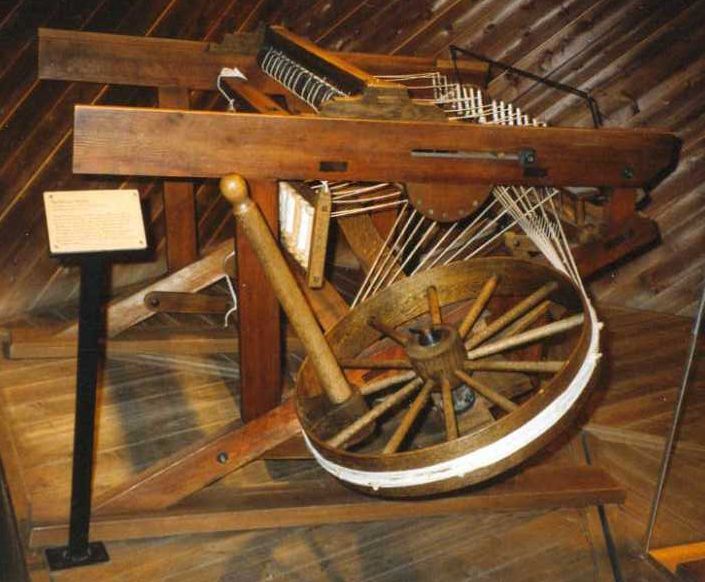
The rapid increase in the need for coal stimulated the creation of a new machine that would enable this essential resource of the Industrial Revolution to be transported quickly and easily. This led to the development of steam locomotives. The first rail locomotive was invented in 1804. By 1825, the new locomotives had a pulling capacity of 90 tonnes. They were therefore capable of pulling a train 70 metres long, which was enormous at the time.

Not only did this new mode of transport encourage the transport of coal, but in the years that followed, a whole network of railways developed in Europe, changing the way Europeans travelled. Maritime transport also benefited from the power of steam, as many steamships were designed at the same time.
In 1776, Adam Smith, a British economist and philosopher, published a work in which he proposed a new theory, economic liberalism. In Investigations into the Nature and Causes of the Wealth of Nations, Smith developed his theory, which would promote industrialization. According to him, the economic interests of people in general lead to the enrichment of the nation.
Consequently, people should be free to do business without being blocked or supported by the state. The only thing that matters is the law of the market, i.e. supply and demand. There is no need for the state to intervene, since the law of the market naturally sets prices.

Several factors favoured England's industrial development. Not only were these factors all present in England, they were all present at the same time. England began exploiting mineral energy very early on. What's more, because of its geographical location, England benefited from enormous coal reserves, making it easier to exploit and develop steam machines.
What's more, the liberal philosophy and Protestant religion both emphasised the entrepreneurial spirit. British ideology therefore strongly encouraged economic development: commercial capitalism could flourish.
England's colonial expansion in the 18th century created many additional needs, stimulating the search for new methods of production. At the same time, demographic growth expanded the market. Since the agricultural revolution required fewer workers, many workers were available in England. Merchants and manufacturers took advantage of commercial opportunities to reconcile the new needs with the large number of available workers. It was these merchant-manufacturers who invested in and developed factory work and the mechanization of production.
Even before the start of the Industrial Revolution, the proportion of peasants in the British workforce was relatively low. British society was already more commercial than other European societies, more urbanised and the market more developed. This advantageous situation was helped by the many and varied resources coming from the colonies and by the mechanisation of cotton processing. British international trade therefore already had an advantage over other European powers.
In the 19th century, the London Stock Exchange was created. This enabled companies to obtain additional capital (money) and invest it in new projects or other large-scale commercial activities. From 1801, companies could sell shares to the public.
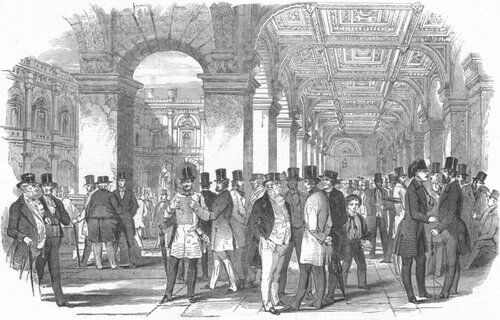
Finally, during the wars led by Great Britain, the country was able to develop a strong economy. At the same time, the international economy revolved around Great Britain. The country thus benefited from a number of financial, commercial and technological advantages and developed a strong leadership. Thanks to all the inventions and the energy from coal, the country was going to industrialise before the others. Commercial activities moved to where the energy source was. With the Industrial Revolution also came the urbanization of the country.
